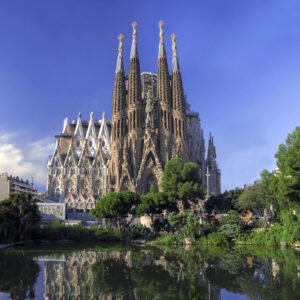1. Spend some time in a traditional Dublin pub
In all likelihood, you don’t need us to tell you that the pub is a quintessential Dublin experience, but here we are. It’s where you’ll meet Dubliners at their convivial, easy-going best and get a sense of what makes this city tick. There are few Dublin institutions so fawned over and written about as the traditional pub – probably because so many of the city’s best-known writers were regulars in them.
In Ulysses, Leopold Bloom muses that ‘a good puzzle would be to cross Dublin without passing a pub,’ to which the only logical answer is that it can be done…by going into everyone you see. Given that there are around 800 of them spread about the city it’s probably not the wisest thing to do if liver function is important to you, but there are a bunch of them that will make your Dublin stay all the more memorable. One of my favorites is John Mulligan of Poolbeg Street, which was also a favorite of Leopold Bloom’s creator, James Joyce.
2. Walk the cobbles of Trinity College
Since its foundation in 1592, Trinity College has become one of the world’s most famous universities; it’s the alma mater of Swift, Wilde and Beckett; it’s where you’ll find the most beautiful library in the whole country and the home of the world’s most famous illuminated Gospel, the Book of Kells. The library’s 200,000 books have been removed as part of a landmark restoration project, but the consolation prize is an enhanced digital experience that tells the story of the Book of Kells in dramatic, impressive detail. Trinity’s 16 hectares are an oasis of aesthetic elegance, its cobbled quadrangles lined with handsome neoclassical buildings that lend an air of magisterial calm to the campus, evident as soon as you walk through Front Arch.
Local tip: If you’re visiting during the summer – ie outside of term time – you can stay in student accommodation for a fraction of the cost of a hotel on the other side of the walls. See visittrinity.ie.
3. Studios at the Dublin City Gallery – the Hugh Lane
Hanging on the walls of a magnificent Georgian pile is arguably the city’s finest collection of modern and contemporary art, which runs the gamut from impressionist masterpieces (Degas, Monet, Manet et al) to Irish artists such as Dorothy Cross and Sean Scully as well as a collection of stained-glass windows by Harry Clarke. The Dublin City Gallery (aka the Hugh Lane, after its founder)’s most visited installation, however, is Dublin-born Francis Bacon’s actual London studio, brought over piece by piece and painstakingly reassembled in all its glorious mess – you can’t step inside it but you can observe exactly how the artist lived and worked, down to the minute details.








